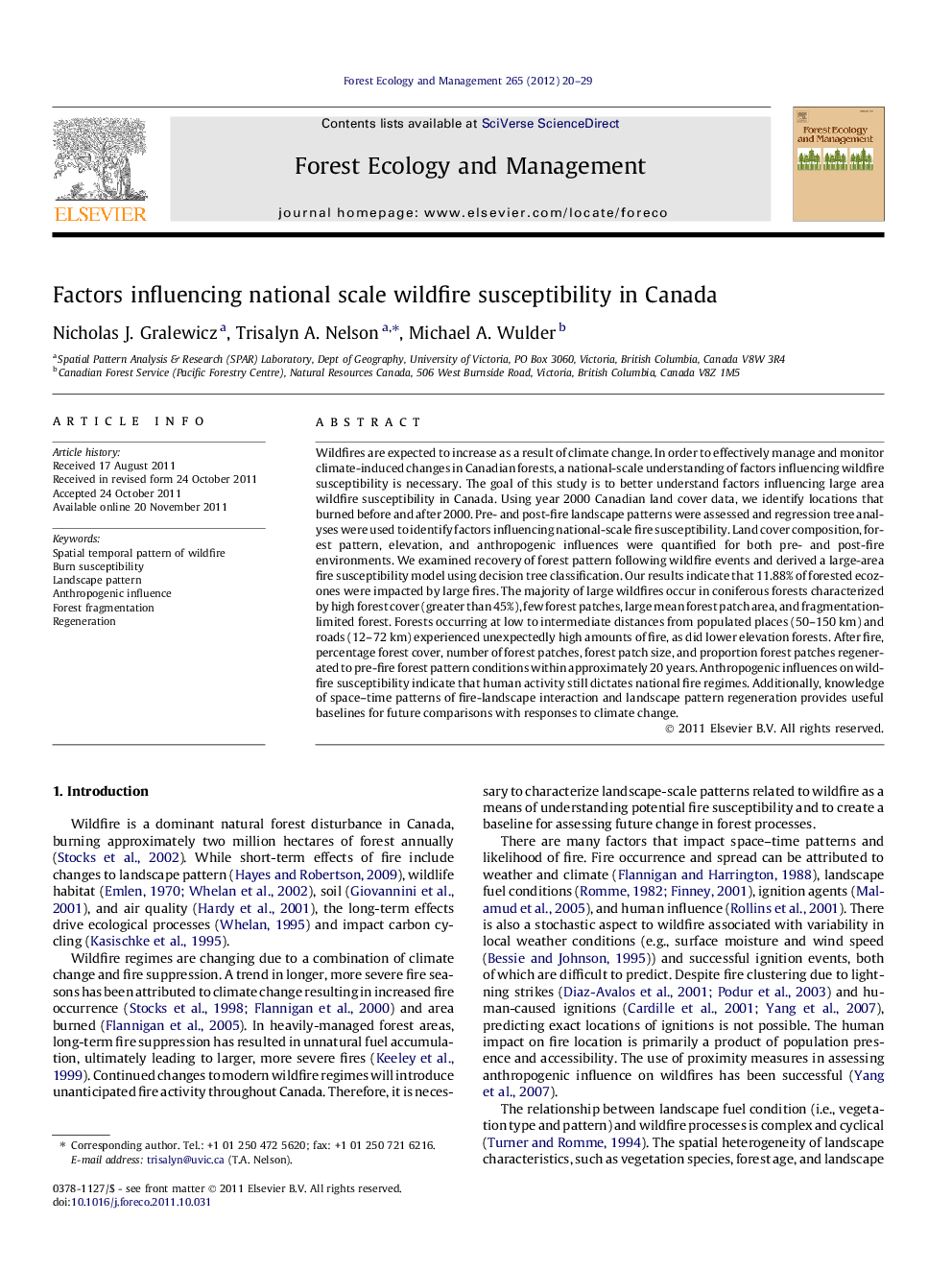| Article ID | Journal | Published Year | Pages | File Type |
|---|---|---|---|---|
| 87554 | Forest Ecology and Management | 2012 | 10 Pages |
Wildfires are expected to increase as a result of climate change. In order to effectively manage and monitor climate-induced changes in Canadian forests, a national-scale understanding of factors influencing wildfire susceptibility is necessary. The goal of this study is to better understand factors influencing large area wildfire susceptibility in Canada. Using year 2000 Canadian land cover data, we identify locations that burned before and after 2000. Pre- and post-fire landscape patterns were assessed and regression tree analyses were used to identify factors influencing national-scale fire susceptibility. Land cover composition, forest pattern, elevation, and anthropogenic influences were quantified for both pre- and post-fire environments. We examined recovery of forest pattern following wildfire events and derived a large-area fire susceptibility model using decision tree classification. Our results indicate that 11.88% of forested ecozones were impacted by large fires. The majority of large wildfires occur in coniferous forests characterized by high forest cover (greater than 45%), few forest patches, large mean forest patch area, and fragmentation-limited forest. Forests occurring at low to intermediate distances from populated places (50–150 km) and roads (12–72 km) experienced unexpectedly high amounts of fire, as did lower elevation forests. After fire, percentage forest cover, number of forest patches, forest patch size, and proportion forest patches regenerated to pre-fire forest pattern conditions within approximately 20 years. Anthropogenic influences on wildfire susceptibility indicate that human activity still dictates national fire regimes. Additionally, knowledge of space–time patterns of fire-landscape interaction and landscape pattern regeneration provides useful baselines for future comparisons with responses to climate change.
► Majority of wildfires occur in non-fragmented coniferous forests. ► After wildfire, forest spatial patterns recover to pre-fire conditions in ∼20 years. ► Nationally, anthropogenic factors have a large influence on wildlife susceptibility.
